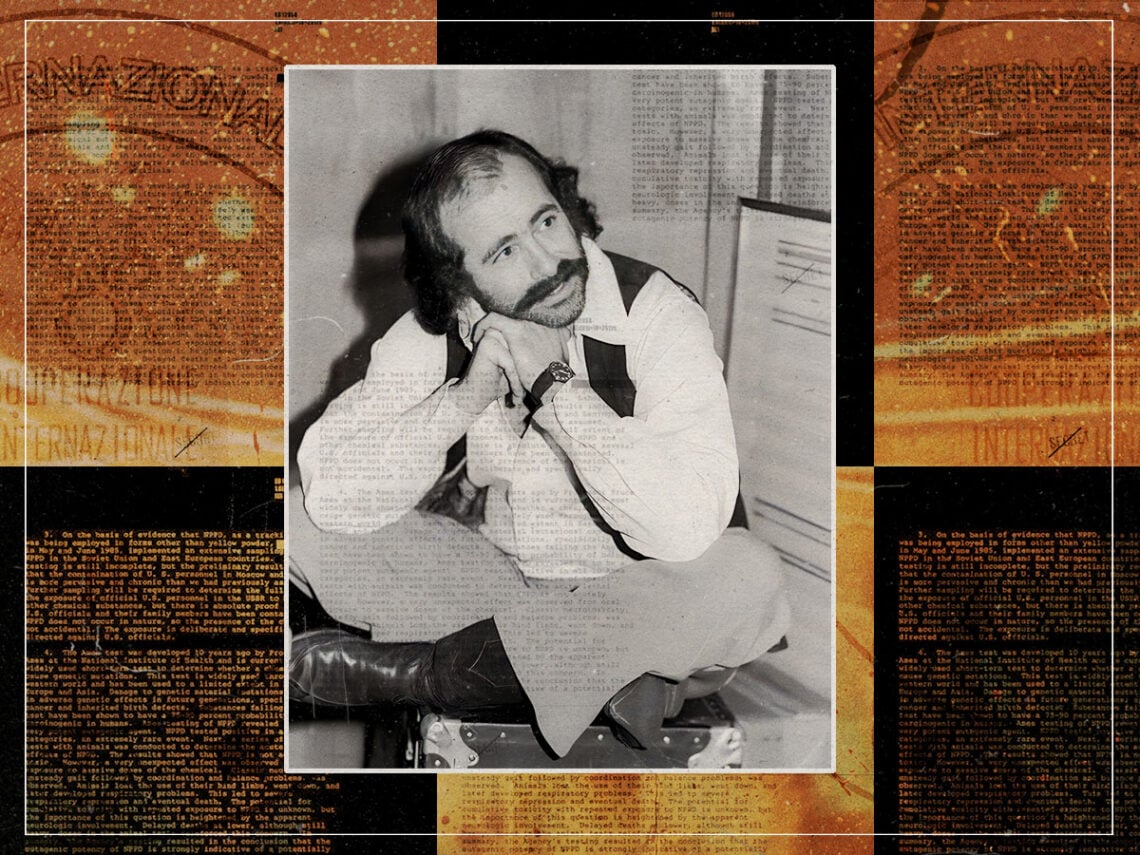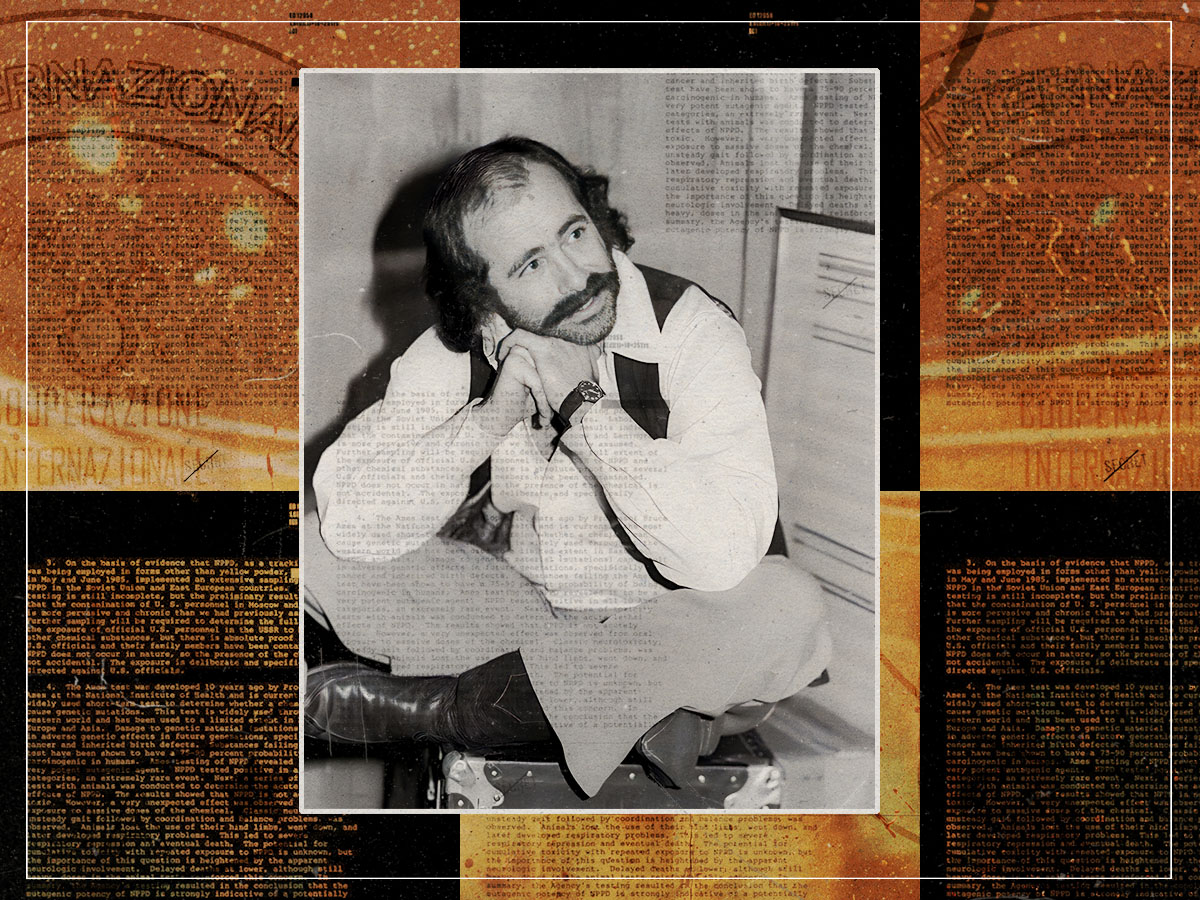
(Credits: Far Out / Ed Perlstein / Paul F. Kisak)
Thu 9 October 2025 23:11, UK
Robert Hunter never had a problem following his muse when it presented itself.
The Grateful Dead lyricist could adapt his writing style to a number of different genres, whether it was the playfully whimsical ‘Ramble On Rose’, the dense psychedelia of ‘China Cat Sunflower’, or the autobiographical storytelling of ‘Truckin”. Hunter experienced a major outpouring of classic material between 1969 and 1972, producing a large number of the most beloved songs in the Grateful Dead canon.
Hunter wasn’t just the Grateful Dead’s lyricist, he was the guy staring into the same acid-stained abyss as the rest of them, only he came back with actual words. He was the Dead’s invisible fourth wall, the slightly spooky man with the pen in the corner of the room who could lace cowboy campfire tales with Zen kōans, Bible verses, and streetwise junkie wisdom, sometimes in the same verse.
It was while visiting England for the first time in 1970 that Hunter found himself relaxing in the home of Alan Trist, one of the Dead’s publishers and extended family members. Suddenly, Hunter experienced a profound onslaught of inspiration. With only a bottle of retsina wine to keep him company, Hunter went about scribbling some lyrics that wound up forming the basis for three classic Grateful Dead songs: ‘Ripple’, ‘Brokedown Palace’, and ‘To Lay Me Down’.
“Once in awhile you get shown the light, in the strangest of places if you look it right”.
Robert Hunter
“It was the second day I was there, and everybody went and left me alone with a case of Retsina,” Hunter recalled in the Classic Albums documentary From Anthem to Beauty. “I realised, here I was in London, the city I’d always dreamed of going to, and I was very, very happy. I felt like I’d come home to some psychic place, maybe the home of Robin Hood and Peter Pan.”
“I’d only drank half a bottle of this Retsina, but it was having the whole case there that was important,” Hunter added. “I sat down and wrote ‘Ripple’, ‘To Lay Me Down’, and ‘Brokedown Palace’ that afternoon. It was a magic day. I knew I was writing stuff that would live forever.”
What’s wild is how natural it all felt when coming from Hunter. He wasn’t forcing the “psychedelic” thing. That was the trap most songwriters fell into back then – throwing paisleys at the wall to see what stuck. Not Hunter. He was channelling something much older. His lyrics felt lived in, like they belonged to some American folk tradition that never really existed but should’ve.
In the foreword to The Complete Annotated Grateful Dead Lyrics, Hunter described that particular day in more poetic terms. “The personal quintessence of the union between writer and Muse, a promising past and bright future prospects melding into one great glowing apokatastasis in South Kensington, writing words that seemed to flow like molten gold onto parchment paper,” was how Hunter described the process decades later.
Look, without Robert Hunter, the Grateful Dead would’ve been just another San Francisco freak band lost in a haze of patchouli and poorly tuned guitars. Talented? Sure. Legendary? Probably not. It was Hunter who gave their jams meaning. He gave them mythology. He turned their music into a communal prayer that hippies, truckers, speed freaks and suburban dropouts could all sing along to.
It didn’t take long for Jerry Garcia to take Hunter’s words and make songs out of them. Both ‘Ripple’ and ‘Brokedown Palace’ would appear on American Beauty just a few months after Hunter’s writing session. ‘To Lay Me Down’ made its first official appearance on Garcia’s self-titled 1972 solo album but would quickly become a part of the Dead’s live repertoire, having been performed more than 75 times between 1970 and 1992.
Check out ‘Ripple’, ‘Brokedown Palace’, and ‘To Lay Me Down’ below.
Related Topics
